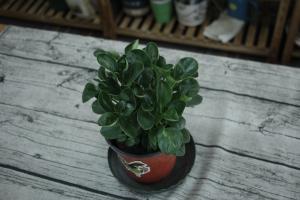Introduction
Tropical plants are known for their lush foliage and vibrant flowers. However, they require a certain level of care and attention in order to thrive. Proper watering is one of the most important factors in maintaining healthy tropical plants. In the winter months, when temperatures and daylight hours are lower, it is important to adjust your watering routine to meet the needs of your plants. This article will offer some tips on how often to water tropical plants in winter.
Understanding Tropical Plants
Tropical plants come from hot, humid environments where rainfall is frequent. As a result, they require more water than plants that are native to drier climates. However, overwatering can be just as harmful as underwatering. When soil is constantly saturated, it can lead to root rot and other fungal diseases. It is important to let the soil dry out slightly between watering to avoid these issues.
Factors to Consider
When determining how often to water your tropical plants in winter, there are several factors to consider. These include the size of the plant, the type of container it is in, the humidity of the environment, and the amount of light it is receiving. Plants in larger containers will require less frequent watering than those in smaller pots. Plants in containers with drainage holes will also require less watering than those in sealed containers. High humidity levels can help to reduce water loss through evaporation, meaning plants may require less frequent watering. Lastly, plants that receive less light in the winter months will require less water than those in brightly lit areas.
Watering Frequency Guidelines
As a general rule, tropical plants in winter should be watered less frequently than in the summer months. Watering once a week is a good starting point, but you should monitor your plants closely and adjust your watering routine as necessary. It is better to underwater than overwater, as it is easier to revive a slightly dehydrated plant than one that is suffering from root rot.
When watering your plants, be sure to soak the soil thoroughly. Water until you see it start to drain from the bottom of the pot. This ensures that the entire root system is being hydrated. Avoid watering the leaves of the plant, as this can increase the risk of fungal diseases.
If you are unsure whether your plant needs watering, you can use a moisture meter to check the moisture level of the soil. Another way to check is to stick your finger about an inch into the soil. If it feels dry at that depth, it is time to water.
Conclusion
Proper watering is essential to the health of your tropical plants in winter. Monitoring your plants closely and adjusting your watering routine to meet their needs is key. Remember to let the soil dry out slightly between watering to avoid root rot, and be sure to soak the entire root system when watering. By following these guidelines, you can help your tropical plants thrive throughout the winter months.

 how many times do yo...
how many times do yo... how many planted tre...
how many planted tre... how many pine trees ...
how many pine trees ... how many pecan trees...
how many pecan trees... how many plants comp...
how many plants comp... how many plants can ...
how many plants can ... how many plants and ...
how many plants and ... how many pepper plan...
how many pepper plan...





























